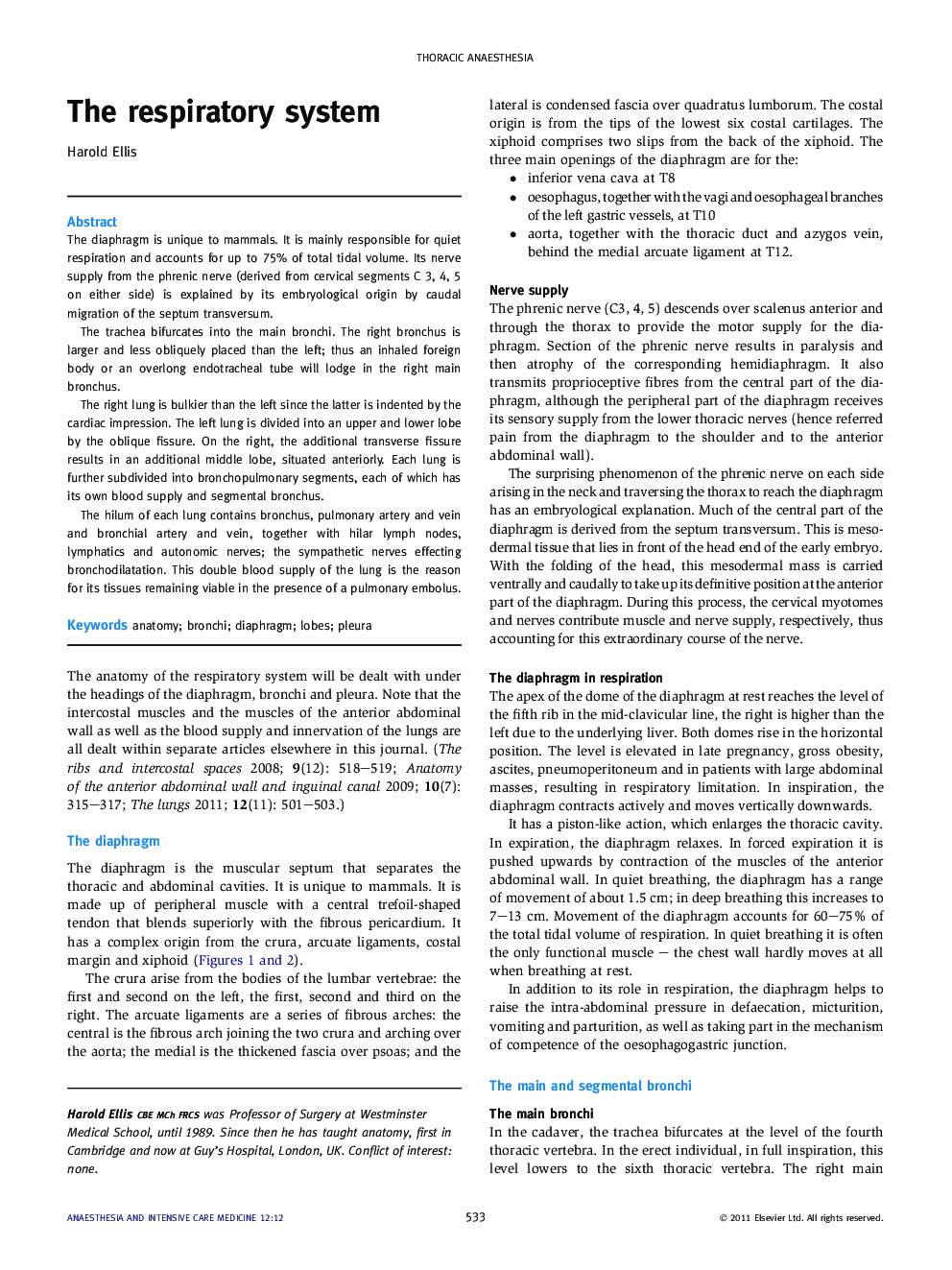| Article ID | Journal | Published Year | Pages | File Type |
|---|---|---|---|---|
| 2742566 | Anaesthesia & Intensive Care Medicine | 2011 | 6 Pages |
The diaphragm is unique to mammals. It is mainly responsible for quiet respiration and accounts for up to 75% of total tidal volume. Its nerve supply from the phrenic nerve (derived from cervical segments C 3, 4, 5 on either side) is explained by its embryological origin by caudal migration of the septum transversum.The trachea bifurcates into the main bronchi. The right bronchus is larger and less obliquely placed than the left; thus an inhaled foreign body or an overlong endotracheal tube will lodge in the right main bronchus.The right lung is bulkier than the left since the latter is indented by the cardiac impression. The left lung is divided into an upper and lower lobe by the oblique fissure. On the right, the additional transverse fissure results in an additional middle lobe, situated anteriorly. Each lung is further subdivided into bronchopulmonary segments, each of which has its own blood supply and segmental bronchus.The hilum of each lung contains bronchus, pulmonary artery and vein and bronchial artery and vein, together with hilar lymph nodes, lymphatics and autonomic nerves; the sympathetic nerves effecting bronchodilatation. This double blood supply of the lung is the reason for its tissues remaining viable in the presence of a pulmonary embolus.
